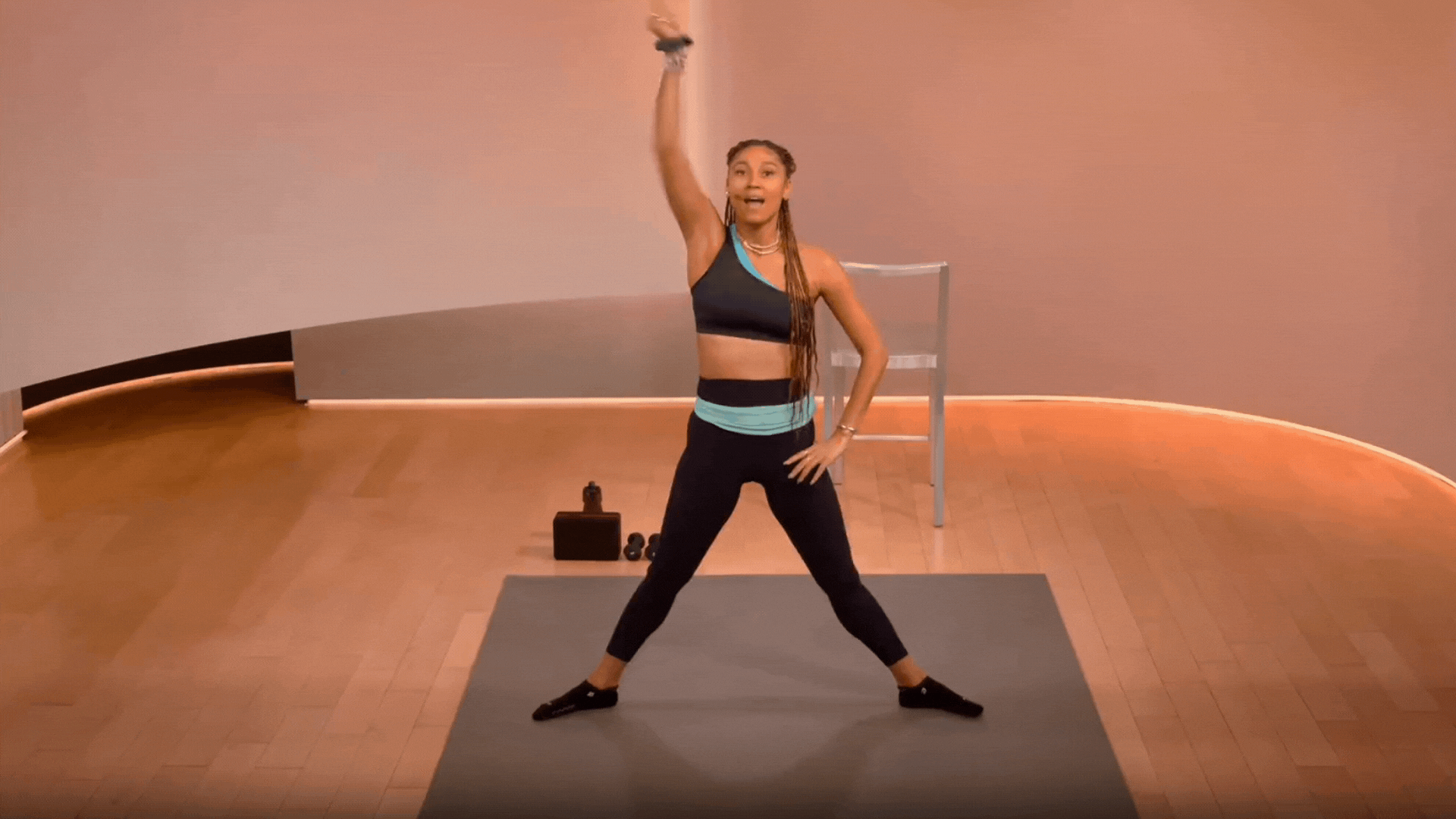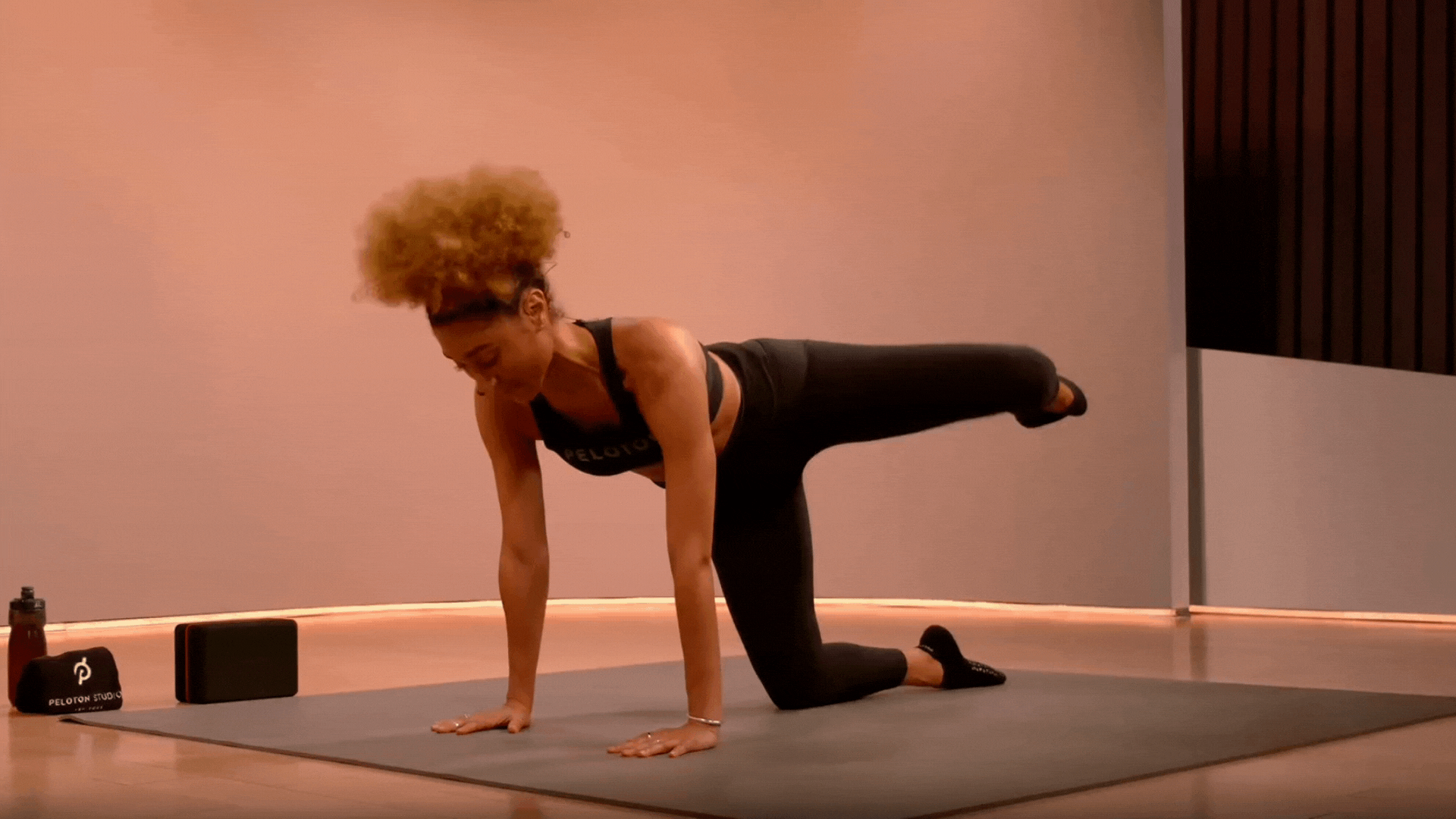Benefits of Inner Thigh Exercises
How to Work the Inner Thigh Muscles
The Best Inner Thigh Exercises
Inner Thigh Exercises With Gym Equipment
The Takeaway
Peloton cycling and barre instructor Ally Love shares why working the muscles of your inner thighs can balance your training, plus, her favorite inner thigh exercises to add to your next workout.
Your legs are the powerhouses of your lower body. They are responsible for increasing your cadence on the bike and helping you run longer and stronger on the road or treadmill. But you know this—it’s why you take the time to stretch and strength train your lower body. But your legs are more than just your quads, hamstrings, glutes, and calves. One muscle group that’s often forgotten or last on your training list are the inner thighs, known as your adductors.
These little muscles have a big job. Adductors are responsible for bringing your thighs (and therefore, legs) toward the center or midline of your body. This alignment is so important when you are on the Bike. This is exactly why instructors like yours truly are making sure your knees are tracking correctly before a ride begins. It’s just as important when you run, walk, and row.

Peloton App
Access thousands of classes with no equipment needed.
Just like any muscle group, your adductors could always use a little love and attention. Here’s how to give them the TLC they need, and why it’s so important to work inner thigh exercises into your training plan.
Benefits of Inner Thigh Exercises
Inner thigh muscles play a vital role in stabilizing the pelvis and hip joints. Strong inner thigh muscles help maintain proper alignment for your legs and pelvis. Having strong inner thighs also enhances stability and balance during various activities and sports like basketball, tennis, and more.
In general, you want to aim to hit these muscles two to three times a week. Sometimes, these exercises will be baked into a lower body strength training workout. If not, add on five extra minutes to your workout to squeeze in a few of these moves for strong, balanced legs.
How to Work the Inner Thigh Muscles
Certain exercises that you may already be doing in your strength training workouts will effectively target your inner thigh muscles. These are referred to as compound leg exercises because they target multiple muscle groups at the same time. Squats, grand plies, lunges, deadlifts, and leg presses already engage the inner thigh muscles to some extent. You can certainly feel those adductors burning when you do these moves—I know I do! (We’ll go over exactly how to do these below.) Compound leg exercises are great because they provide a comprehensive leg workout and can be performed regularly depending on your training schedule.
If you’re feeling like your inner thighs are still a little weak, whether you notice your alignment is off, you have limited hip mobility, or you find yourself bearing more weight on the outside of your body when exercising rather than balancing yourself through your middle and core then adding some adductor-specific exercises can help. When it comes to these moves, listen to your body and stay keen on recovery. The inner thigh muscles like any other muscle group require adequate rest and recovery to avoid overtraining. If you feel excessively sore or fatigued in the inner thigh area, you may want to reduce the frequency and/or intensity of specific exercises temporarily.
The Best Inner Thigh Exercises
Your adductors aren’t just one muscle – they are five that work together to stabilize the hips and pull the legs together while helping with rotation. For all the anatomy lovers, this includes the adductor longus, adductor magnus, adductor brevis, gracilis, and the pectineus. Most inner thigh exercises are going to hit all of these muscles (thank goodness!) as well as those compound leg exercises.
Ready to get to work? Here’s a list of my all-time favorite exercises to hit your inner thighs. Pick your favorites and make sure to incorporate them into your strength training two to three times a week. Once you’ve mastered a move don’t forget to switch it up. After all, variety is the spice of life and strength training! Subbing in new exercises will continually challenge your muscles so that they continue to get stronger and generate more power for you. For all of these moves, aim to get 10 to 12 reps in, or see how many you can do in 20 to 30 seconds.
1. Squats

A. Stand with your feet hip-width apart, knees just slightly bent.
B. Engage your core and slowly lower down, as if you were to sit in an invisible chair. Make sure your knees are staying in line and not collapsing in.
C. Hold for 3 to 5 seconds and slowly and return to starting position.
2. Grande Pliés

A. Stand with your feet turned outward, heels touching.
B. Holding on to a barre, chair, or wall, keep your back straight and bend your knees, making sure to track them over your toes.
C. Lift your heels as you continue bending, until the thighs are horizontal to the ground. Make sure your hips are stacked on top of your thighs.
D. Pushing your heels back into the floor, slowly rise and straighten legs, returning to your start position.
3. Lunges

A. Start by standing with your right foot staggered in front of your left, right knee bent and left leg long.
B. Engage your core and keep your spine long as you bend your left knee to a 90-degree angle, with the left heel elevated off the ground.
C. Push through your right foot to return to your starting position with the left leg extended. After your set reps or time, make sure to switch sides so that the left leg is staggered in front of the right.
4. Deadlifts
A. Stand with your feet shoulder-width apart and place heavy dumbbells (think 15 lbs. to 30 lbs.) horizontally between your feet.
B. Keeping your back flat and spine long, bend at the knees into a squat.
C. Pick up the dumbbells with straight arms as you straighten your legs, coming out of your squat. Your dumbbells should stop at your shins.
D. Slowly lower dumbbells back down as you squat again and repeat.
5. Side Laying Leg Lift

A. Start by lying on your right side, head supported by your right hand. Your right leg can be straight or slightly bent.
B. With both feet flexed, exhale and lift the left leg up. (To make this move more difficult, pause at the top of the lift and do 10 tiny pulses.)
C. Inhale as you slowly lower the leg back to starting position. Once you’ve completed your set reps or time, switch sides.
6. Standing Hip Adduction
A. Stand with feet slightly apart, knees bent. Hold on to a barre, chair, or wall for balance.
B. Exhale and lift the left leg across to the right side of the body. Keep your foot flexed and make sure the lift is a slow, controlled movement rather than momentum.
C. Inhale and lower back to starting position, without letting your foot hit the ground. Once you’ve completed your set reps or time, switch legs.
7. Fire Hydrant

A. Start on your hands and knees (as if you were about to do a cat-cow). Keep your back flat and core engaged.
B. With your knee bent, raise it out to the side toward the ceiling. (To make this move more difficult, hold or do 10 tiny pulses.)
C. Slowly lower knee to starting position. Once you’ve completed your set reps or time, switch legs.
Inner Thigh Exercises With Gym Equipment
For those who have access to a gym, there are a few pieces of equipment that target those inner thigh muscles, helping to get your lower body stronger and improve your leg mobility. My gym go-to's are:
Leg presses
Seated hip adduction
Cable hip adduction
The Takeaway
Your inner thighs are an important part of your overall strength. Keep them conditioned to stay flexible and improve your endurance. If you’re not sure where to start keep it short and sweet: a 10-Minute Barre class will often work your inner and outer thighs together—starting with activations to engage those muscle groups and then moves that will challenge you, keep you balanced, and leave you feeling strong and energized.
This content is for informational and educational purposes only and does not constitute individualized advice. It is not intended to replace professional medical evaluation, diagnosis, or treatment. Seek the advice of your physician for questions you may have regarding your health or a medical condition. If you are having a medical emergency, call your physician or 911 immediately.



